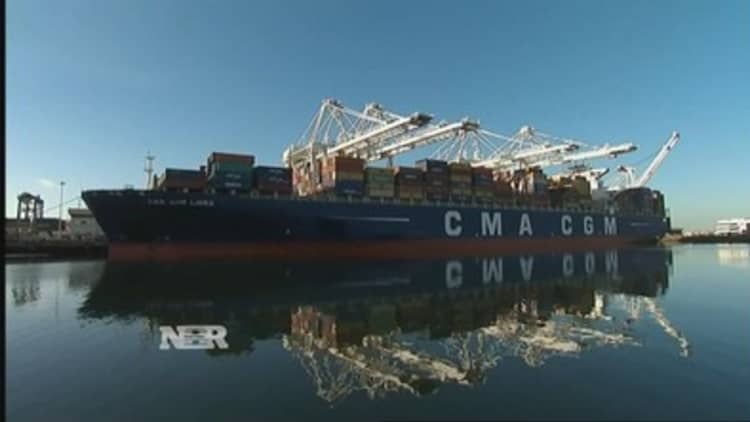
Enough is enough.
Burdened by late spring deliveries after nine months of tense negotiations at West Coast ports, retailers want to take things into their own hands.
According to a new study by consulting firm BDO, although the cost of manufacturing remains lower in overseas regions such as Asia, 43 percent of retail chief financial officers said that North America provides the most attractive sourcing opportunities for 2015.
That's a substantial increase from last year, when only 30 percent of respondents chose North America. On the flip side, the number of CFOs who said Asia is the most ideal region for sourcing opportunities dropped from 39 percent to 37 percent; the number who selected Europe fell from 7 percent to 2 percent.
The results were based on a survey of 100 retail chief financial officers.
Read MoreWest Coast ports: Retail's $7 billion problem
"If you just look at pure dollars of the labor cost [in the U.S.], it's not cheaper," said Ted Vaughan, partner in BDO's consumer business practice. "But when you start adding up the costs of manufacturing overseas and you add in the additional shipping costs or the potential for delays and getting products, those costs will begin to equal out."
Retailers from Macy's to Gap and Steve Madden to Carter's cited delays at the West Coast ports—where operations have been disrupted by a labor dispute—as a substantial headwind for 2015. The International Longshore and Warehouse Union and the Pacific Maritime Association reached a tentative deal in February.
At Macy's, for example, management said about 12 percent of its first-quarter buys will be delayed one to five weeks. At Gap, executives predict delayed merchandise will dent its full-year earnings by 13 cents a share.

Contributing to cost increases are the extra expenses required to reroute merchandise to temper delays. According to a recent report by Macquarie Research, it costs roughly twice as much—$4,000—to ship a 40-foot container from China to the East Coast instead of the West Coast.
Read MoreMade in America (by China)
Air freight also comes with a steep price tag. Macquarie referenced Ann Inc., which said before the port issues escalated that it sustained $5 million in incremental air costs for the third quarter. Adding to retailers' woes is that late product deliveries often lead to markdowns on items that otherwise may have sold at full price.
And it's not just the labor issues at the ports, there are other factors contributing to an increased interest in moving the supply chain to the U.S., Vaughan said. For one, as retailers look to shorten the amount of time it takes them to move merchandise from production to the selling floor, domestic sourcing will become more beneficial.
This includes the fact that more retailers are looking to incorporate "read-and-respond" capabilities, meaning they place smaller initial orders, wait to see what items sell briskly, and then place additional orders accordingly.
Other reasons include rising wages in China, and the halo surrounding items that are made in the USA, Vaughan said.
"There's a customer preference," he said. "I think people want to hear that."
Read MoreMade in the USA: An iconic holiday toy comes home
Among companies that have already made the transition are K'Nex, which recently shifted the manufacturing of its Lincoln Logs toy to the U.S., and baby seat maker Thorley, which moved some of its operations here.
Still, while more retailers are expressing interest in domestic sourcing, Vaughan said it will be a slow shift back to the U.S., where the economy has become mostly service-oriented.
"It's not one of those things that's immediately going to switch," he said, adding that there's a low supply of workers in this field. "[But] where there's a need, there would become supply."


